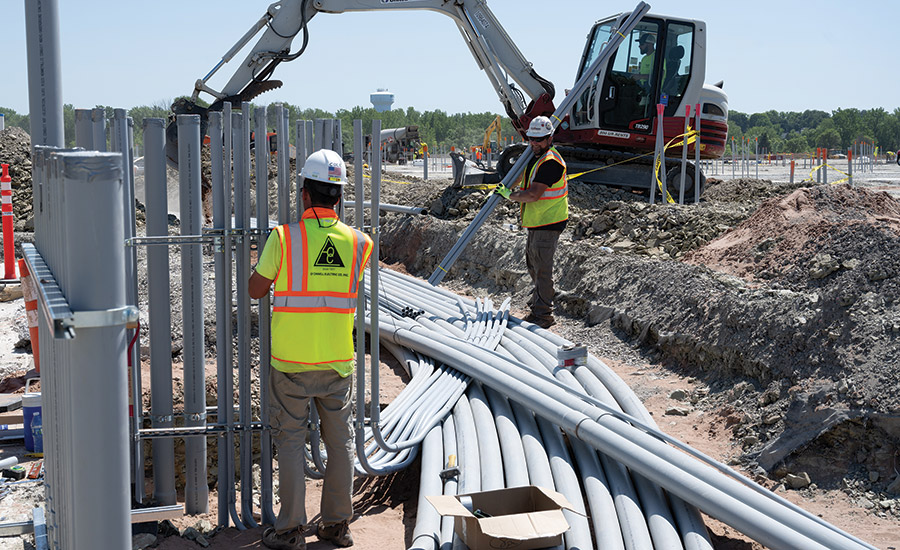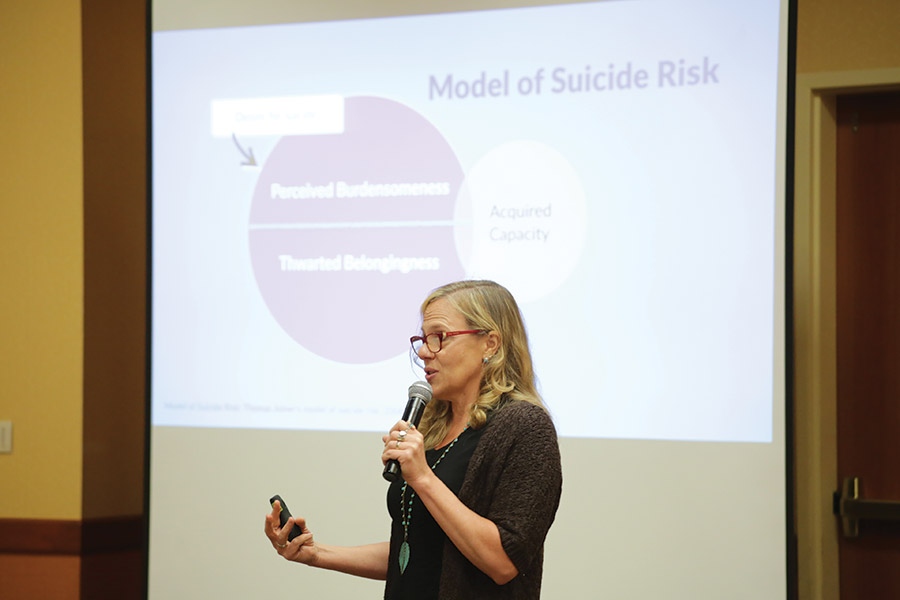For the first time since the 2010 housing crisis, total revenue for ENR's Top 600 firms decreased—from $151.3 billion last year based on 2019 revenue to $145.9 billion this year based on 2020 revenue—a drop of 3.57%. Of the 540 firms that filed surveys this year and last, 50.6% saw revenue fall. Consequently, median revenue for firms is down even more, dropping 8.56% to $83.74 million in 2021, from $91.58 million last year.
Because of COVID-19’s wide-reaching, detrimental effects on everything from labor and material availability to pricing and employee health—no specialty contracting company has been able to say that it has been completely unscathed by the pandemic.
Where some firms are finding success, others are faltering due to ongoing market disruptions that are out of anyone’s control. But prospects aren’t all doom and gloom for subcontractors. Learning to live with COVID-19 has netted innovative operational results for many firms as they navigate an unprecedented construction market that challenges players to risk more to move projects forward.
Related Links
ENR 2021 Top 600 Specialty Contractors
View complete 2021 firm rankings with full market analysis
(Subscription Required)
Tracking Project Productivity
Even with all the logistical elements in place on a jobsite, project productivity can be shortchanged if contract partners aren’t on the same page about what can and can’t be controlled, explains Seretta President Andrew S. McPherson. The first step is to accept that “normal” is now relative, he says.
540
firms on the 2021 Top 600 list also sent in a survey for the 2020 ranking.
“Everyone needs to accept that we are in a strange and difficult time.... We still run into clients who act like everything is the same, and they do not know that there are material delays and/or cost increases,” says McPherson. “The sooner everyone stops acting like they will somehow magically not be affected by all of this, the better.”
Contractors can then better focus on what they can change. “COVID has obviously been a negative impact on everything on the planet,” says McPherson. “The prior president’s tariffs have had a major impact on the cost of various materials and, coupled with the lockdowns and reduced work force, prices have continued to rise. This will eventually cause a major slowdown in construction if it doesn’t change.”
48.5%
report that revenue rose between 2019 and 2020
What specialty contracting firms have saved in replacing travel expenses with virtual site visits and cutting down on day-to-day office costs, they report spending on PPE, enhanced cleaning products and more jobsite equipment so field crews can work as separate pods and reduce sharing and crowding.
But the biggest cost for many firms is time. Wearing and finding masks, answering questionnaires about virus exposure, daily temperature checks, and cleaning and sanitizing takes minutes out of an individual’s day, but it can add up to a major loss of time on a delivery schedule.
50.6%
report that revenue fell between 2019 and 2020.
“COVID-19 has caused us to spend more time on jobs due to social distancing, the inconvenience of wearing PPE, daily cleaning of tools and completing a daily text message health questionnaire,” says Victor E. Salerno, co-chairman and CEO of O’Connell Electric. He says the company anticipates “in the not too distant future that the COVID-19 problems will be in the past, adding that “We will be able to save some time when appropriate by continuing with Zoom meetings.”
Other firms such as C3M Power Systems LLC are preparing their field operations for the long haul by reexamining how they can better work with each other and partner, albeit virtually, with other specialty contractors on site. “Partnering should be implemented on every construction project,” says Chuck Tomasco Jr., firm senior vice president and general manager. “It's a great way to align the team on the project's goals, commit to quickly address issues that arise including agreeing on an escalation process among the project's leaders, and most importantly build trust.”
Better communication is “always the goal,” says Rick DiZinno, executive vice president of Pittsburg Tank & Tower Group—even as a specialty contractor whose work has limited interactions with other trades.
“Once the foundation is completed by the civil contractor, we bring all of our own tools and infrastructure to erect and paint the tanks,” explains Dillon Herdegen, vice president of operations for the firm's Ground Tank Division. After the tank is completed and ready to be put in service, mechanical trades will hook up the pipes and valves. “Strategizing to limit the time our craft workers are within six feet [of one another] while trying to complete some of the tasks we have been accustomed to completing with teamwork for the past 100 years has been a struggle. It takes planning of the work utilization of other mechanical means to hold and position pieces while welding them,” says Herdegen.

“Partnering should be implemented on every construction project.”
Chuck Tomasco Jr., SVP and General Manager, C3M Power Systems
Pittsburg Tank & Tower focused on what it could control and implemented a task force that meets regularly to discuss how to reduce the spread and impact of the virus. “Daily and weekly safety meetings have probably been the most impacted areas of the field erection and painting process other than how to utilize face coverings as part of our PPE while completing hot work,” shares Herdegen.
But even with all COVID-19 prevention protocols in place such as mask mandates and social distancing, a positive virus test can stop a project’s productivity in its tracks. “When an employee tests positive, we ensure they are quarantined, and we conduct an internal contact tracing,” explains Marilyn Brenton, chief human resources officer at Pittsburg Tank & Tower. “We recommend positive employees contact their doctor for guidance on treatments. We reach out to those who were exposed and monitor symptoms and test as needed. If our field employees have COVID-19 situations, we notify the customer at the jobsite and adhere to any site-specific protocols.”
O'Connell Powers Up Warehouse Project

Photo by Lexie Poudrier, courtesy of O'Connel Electric
O'Connell Electric (No. 73) was awarded a contract for one of the largest inside electrical construction projects in the company’s history, a 3.8-million-sq-ft distribution center located in Syracuse, N.Y. When completed, the facility will feature 10 miles of conveyor belts and hundreds of robots working alongside people. Construction is scheduled to fi nish in the fall of this year.
In Short Supply
Currently, the most effective tool contractors have against outbreaks are vaccinations. However, encouraging employees to take advantage of vaccination opportunities while honoring their personal choices is a delicate dance that for many firms seems on the verge of a change of pace. With President Joe Biden’s recent announcement that all federal employees and federal contract workers must be vaccinated, and more owners instituting mandatory vaccinations on private projects, contractors are looking to OSHA for guidance on how best to proceed with reshaping their employee policies.

“We regularly educate and encourage employees on the benefi ts of being vaccinated.”
Marilyn Brenton, Chief Human Resources Officer, Pittsburg Tank & Tower Group
Until something changes, most contractors are adopting a policy of strongly encouraging their employees to be vaccinated. “To reduce the spread and impact of the virus, we have incentivized employees to get the vaccine, we hold periodic on-site vaccine clinics, and we regularly educate and encourage employees on the benefits of being vaccinated,” says Brenton. For firms with a high percentage of government projects, such as International Asbestos Removal Inc., finding a skilled vaccinated workforce is already becoming a challenge.
“Many of our office and field employees have received the COVID-19 vaccine,” says CEO Karen Grando. “This is extremely important, since many of our projects are public work, and therefore requiring vaccinations.” She adds, “We are even seeing vaccination requirements in non-governmental work sites.”
During the early stages of the pandemic, the firm helped do emergency work in several health and hospital facilities, including emergency hospital tents to accommodate an influx of COVID-19 patients. Staffing such work now, given the new vaccination requirements, could disqualify many firms from bidding, Grando explains.
“In some cases our unions are unable to provide us with adequately trained, vaccinated employees. This is partially due to the extended unemployment benefits,” she says, in reference to the federal unemployment benefits for people impacted by the pandemic, which have since expired.

“Our revenue growth has outpaced the rate of onboarding new staff, both office and site based.”
Seth Pearlman, CEO, Menard North America
Increased employee vaccinations help mitigate some risks and project disruptions as contractors are able to shift vaccinated employees and unvaccinated employees around as projects require. However, many contractors fear a vaccine mandate on all jobsites will dry up an already shallow talent pool.
“The largest impact from COVID that we see impacting the projects or markets moving forward is the potential of clients and/or projects requiring all tradespeople to be fully vaccinated,” says Jacob Vogel, COO at MMC Contractors. “With skilled labor already at a premium and a nationwide debate over vaccinations, requiring vaccinated employees would place additional stress on contractors to keep a skilled workforce capable of maintaining project schedules or expectations.”
For Seretta, the pandemic has “caused major disruptions” in the field and office, McPherson says.. “We intermix our crews based on what production is needed on any given day and when someone got COVID, we had to quarantine multiple crews,” he says. “We paid them for this so not only was it a cost but production was also greatly impacted.”
With a burgeoning demand for e-commerce, Menard Group made plans to scale up its employees and equipment to meet market need. However, the company quickly found that demand outpaced its ability to find skilled workers.
“As we have been scaling up, the demand for people has been high. At the same time, our revenue growth has outpaced the rate of onboarding new staff, both office and site based,” says Seth L. Pearlman, CEO of Menard North America. “This, together with all the constraints of COVID-19 has forced our teams to do more with less resources and has required management to pay close attention to the physical and mental well-being of our people.”
When it comes to workforce mental health, meeting employees “where they are” is key, says Leah Gradl, vice president of Kent Companies Inc. “Today’s workforce spans up to five decades in age range, so we account for how every generation consumes media when sharing resources,” she says. Health and safety operational updates are sent via text messages and videos. “Analytics showed us that one-minute videos are consumed in their entirety, so our messages are concise and high-impact,” says Gradl.
Getting SMART About Mental Health

International mental health and suicide prevention speaker Sally Spencer-Thomas leads a discussion on crisis intervention with SMART MAP leaders.
Photo courtesy of SMART MAP
A national training program in the International Association of Sheet Metal, Air, Rail and Transportation Workers union is helping sheet metal workers tackle issues of mental health, substance abuse and suicide prevention at a local level.
The SMART member assistance program (MAP) trains leadership at local sheet metal unions on how to recognize when someone is in crisis and safely guide them to the appropriate professional resources. Since SMART MAP’s creation in 2013, more than 700 sheet metal workers have completed the program. Skills learned in the program are helping the trade navigate the pandemic.
The national arm coordinates and provides initial training. “It is important that we all know the same information,” explains Ben Cort, a consultant on substance use disorder working with SMART MAP. A key role is “to create and empower local groups to form their own communities to help one another,” he says. Confidentiality, communication and crisis assessment are core components of the program. To conduct crisis interventions, program participants learn about interpersonal skills, ethical responsibility, introspection, how to identify relapse, follow-up, and navigating health care plans. Although it is difficult to know exactly how many incidents the program prevents, local union leaders are seeing impact.
“We’ve been breaking down the barriers where the apprentices and the general members are more likely to talk about their problems,” says sheet metal training coordinator Andy Gilliland of Local 9 in Colorado Springs, Colo. Implementing the program “came from necessity,” he says. “We are 100% positive we have stopped multiple suicides in Colorado.”
The National Survey on Drug Use conducted by the Substance Abuse and Mental Health Administration found 12% of construction workers have an alcohol abuse disorder, above the national average of 7.5%. SMART MAP focuses on an individual’s entire circumstance. Stressors can range from personal issues such as divorce and financial hardships to professional issues such as bullying and job hazards.
“Often one situation, untreated, becomes several,” says Gilliland, who explains that his own mental health struggles have helped him connect to others in need. “The pressures of scheduling, leading crews and maintaining budgets caused many sleepless nights,” he says. He's turned those struggles into help for others.
By Emell Adolphus
Battling Bottlenecks
A struggle to attract more people to construction trades has been an issue for the market long before the onset of the COVID-19 pandemic. An additional issue is finding qualified workers who need minimal onboarding, which has created a bottleneck for firms.
“Quantity is not an issue given unemployment levels, but quality is an ongoing problem,” says Michael Cannon, CEO and chairman of KHS&S Contractors-East Coast. “We’re providing our own training and utilizing Lean policies and procedures to help us increase production with fewer resources.”
However, labor isn’t the only product in short supply for contractors. Top 600 firms also report major bottlenecks in supply chains as manufacturers work to catch up on production—creating a domino effect that in turn results in longer lead times for distribution and delayed project schedules or cancellations in some cases.
“Constantly fluctuating lead times on many products are a major pandemic problem, making the need for transparency with our clients and trade partners about supply chain delays more important than ever,” explains Cannon. Schedules have become “moving targets” as plans adjust for supply setbacks and labor setbacks.
“On projects where multiple workers have been quarantined, we’ve also had to regroup and adjust to meet our commitments,” says Cannon, increasing the price. “We’re operating in markets where margins are extremely tight due to rising costs from skilled labor shortages, higher material prices and increased safety and general operating expenses … [But] contract prices are not increasing proportionately.”
He adds, “Some owners and general contractors are under the illusion that fewer projects under construction should equate to prices going down when, in fact, costs are increasing due to COVID protocols, PPE and material fluctuations.”
When up against such uncontrollable market forces, a little communication goes a long way to ensuring project partners that everything is being done to deliver work in a timely manner.
“We need suppliers and distributors to be more forthcoming on future pricing and availability versus saying, ‘We don’t know,’” Cannon says. “We can’t plan without this input.” Bringing specialty contractors into the conversation early on—similar to the design-build project delivery model—helps project partners collectively navigate around any market shortages from the start, he explains. “We believe early contracting helps mitigate surprises from rising prices and delays and allows time for trade partners to offer material and design alternatives,” says Cannon.
“In our niche area of metal stud, drywall, ceilings, glass and aluminum, the bottleneck is in the distribution,” says Pino Mancina, CEO of National Construction Enterprises Inc. “Most manufacturers have appeared to catch up their production. However, with the lack of transportation delivery drivers, the product seems to sit before it can get to market.”

“We are expanding and relying more on our own prefabrication process.”
Bob Whalen, CEO, HB Global
Items out of stock or taking longer than usual to manufacture—including those that historically have had reliable in-stock supplies or manufacturing lead times—is becoming a new normal and a challenge for specialty contractors. “All major types of pipe are in very high demand with limited or in most cases, no supply,” says Ron Kollar, vice president and chief estimator at Petillo.
To combat this, some contractors are choosing to expedite the purchase and delivery of materials, even if it means storage, to avoid delays. Having options such as the storage of essential materials can help alleviate some of the stress. “The key to being successful for us has been flexibility, diversity of industries served, anticipating longer-lead times and higher costs for materials, as well as leveraging our talent from our different regions,” says Bob Whalen, CEO of HB Global.
The firm's units are ordering materials earlier in the process of a job, although not pre-stocking for projects that don’t exist, and collaborating with its general contractors to help ease the cash-flow burden of doing so. “Some jobs commence 120 days out from contract, and there need to be contingencies to make it successful for the developer, the GC, and the specialty contractor,” says Whalen. “We are expanding and relying more on our own prefabrication process and leveraging our regional facilities for other parts of the nation.”
Northstar Group Sets a Record

Photo courtesy of Northstar Group Services Inc.
Northstar Group Services Inc. (No. 32) recently completed demolition of the 707-ft-high Union Carbide building in New York City, making it the tallest voluntarily demolished structure in the world. Designed by Natalie de Blois and Gordon Bunshaft of Skidmore, Owings & Merrill, the building overtook the 612- ft Singer Building for the record. The structure is set to be replaced with a 1,425-ft tower that will serve as the world headquarters of JPMorgan Chase.
Supply Chain Vulnerabilities
A major lesson specialty contractors have gleaned from current market conditions is this: “The U.S. was ill-prepared to combat COVID-19,” says Jess Elger, senior advisor at Pittsburg Tank & Tower. “The economic turmoil caused by the pandemic has exposed many vulnerabilities in supply chains. Supply chains like ours have had to deal with the stress of elevated demand against an essentially fixed supply of logistics services during 2020 and 2021. One tactic we use is to partner with key suppliers to better ensure a steady and reliable flow of materials.”
As a family-owned business, Pittsburg Tank & Tower is “unencumbered by commitments to investors or any outsiders,” says Elger. “We are free to always do what’s right and what builds the strongest long-term value for our clients, our people and our community,” he says. “The benefits of a long-term, consistent, local supply chain are especially clear for smaller manufacturers like us, whose ability to create genuine relationships with nearby suppliers pay dividends in a crisis.”
Changing Market Forces
Due to vastly different contracting trades, the same market sectors that can be hot for some specialty contractors are cold for others—making it difficult to pinpoint purely from the numbers which forces generated success or a slowdown. Often, however, the canary in the coal mine for the broad range of contractors is steel—pricing, demand and the health of its supply chain.
“Internally we always talk about steel as the economic indicator because it really is a universal currency,” explains Todd Leebow, president and CEO of Majestic Steel, a steel service center serving various clients around the country, including sheet metal, HVAC and automotive industries.
“Steel touches all the markets that are related to construction,” he says. “It’s a global marketplace, and I think it is definitely a great indicator of what is happening in terms of the supply-demand equation.”
W.A. Rasic recently saw a 25% cost increase on a large steel order while waiting to be awarded a project, “which has been an unprecedented increase for us,” says Walter Rasic Jr., vice president of the company. “To address these issues we are requiring our vendors to hold prices for longer and building in some more escalation cost in our estimates to avoid these dramatic price swings.”
This year’s Top 600 Specialty Contractors revenue results add greater insights into how these price swings might be affecting companies' bottom lines.
Water and transportation markets produced the biggest revenue increases for firms, up 15.8% and 13.1% respectively.
The sector with the biggest decrease amid changing energy markets is petroleum, with revenue falling 29.7% to $10.7 billion this year from $15.3 billion on the 2020 ranking. Missing from this year’s list is Team Industries and Nooter, which collectively added $1.1 billion in petroleum revenue last year.
Yet even if their previous revenue was added to this year’s equation, the sector would still be down about 22.2% after steadily rising over the last three years. For specialty contracting overall, steel erection revenue is up 11%, followed by substantial increases in demolition and fire protection.
While revenue was largely down in 2020, payments are being received by Top 600 firms at generally the same clip as in 2019. On average, companies said that 27.7% of incoming payments were received past due, on par with last year’s 27.3%. The average number of days late is 38.1.
The Top 600 Dialogue
How do you anticipate COVID-19 changing your market as a specialty contractor?

ANDREW MCPHERSON, PRESIDENT
SERETTA
Apopka, Fla.
"The prior president’s tariffs have had a major impact on the cost of various materials. Coupled with the lockdowns and reduced workforce, prices have continued to rise. This will eventually cause a major slowdown."

CHRIS EVANS, PRESIDENT
UNIVERSAL BUILDERS SUPPLY
New Rochelle, N.Y.
"The biggest impact may be on how to reduce overcrowding. This may include more hoisting, increased number of access points, additional stair towers and more common spaces to reduce the amount of people in one place."

ROB STROBEL, PRESIDENT/CEO
LITHKO CONTRACTING LLC
West Chester, Ohio
"The buying habits that evolved from people staying at home have accelerated e-commerce distribution 10 years into the future—which meant that there weren’t enough distribution facilities for the product to move."

PINO MANCINA, CEO
NAT'L CONSTRUCTION ENTERPRISES
Ypsilanti, Mich.
"There will be non-productive time in the field as personnel might have to complete additional forms and limit the size of groups. This will be a negative impact on production, which will have to be accounted for in project schedules."

BRAD WUCHERPFENNIG, PRESIDENT
BAKER CONSTRUCTION
Monroe, Ohio
"We continue to see promise in project types that are central to the new economy, such as data and distribution centers and chip plants. Supply chain disruptions and labor shortages will likely continue well into 2022."
How can relations be improved among owners, general contractors, suppliers and distributors?

LEAH GRADL, VICE PRESIDENT
KENT COS. INC.
Grand Rapids, Mich.
"Today’s projects require communications velocity. Sequential project development and buyout is outdated and slow. Strategic project teams collaborate on all logistics together in real time."

TOM DONNELLY, PRESIDENT
BRIGHTVIEW LANDSCAPES
Blue Bell, Pa.
"There’s a delicate relationship balance. Owners seek the best value. General contractors must deliver on that goal. Suppliers want to achieve better materials pricing, and, as a result, distributors in the middle get squeezed."

ROCKY CHERRY, VICE PRESIDENT
CHERRY COATINGS
Carrollton, Texas
"Current supplies from manufacturers are low, and it has been hard meeting timelines outlined by general contractors. Setting upfront expectations on timelines, communicating and working together can help. collaboratively is helpful."

JACOB VOGEL, COO
MMC CONTRACTORS INC.
Kansas City, Mo.
"With the current challenges in the supply chain and logistics sector, we have found that owners and general contractors understand that we are all facing delays in material and equipment deliveries."

MICHAEL CANNON, CEO
KHS&S CONTRACTORS
Tampa, Fla.
"We’re strong advocates of owners and general contractors contracting early on projects to collectively address uncertainty in labor and materials markets. Contracting helps mitigate surprises from rising prices and delays."
Related Links
ENR 2021 Top 600 Specialty Contractors
View complete 2021 list, with full market analysis
(Subscription Required)






